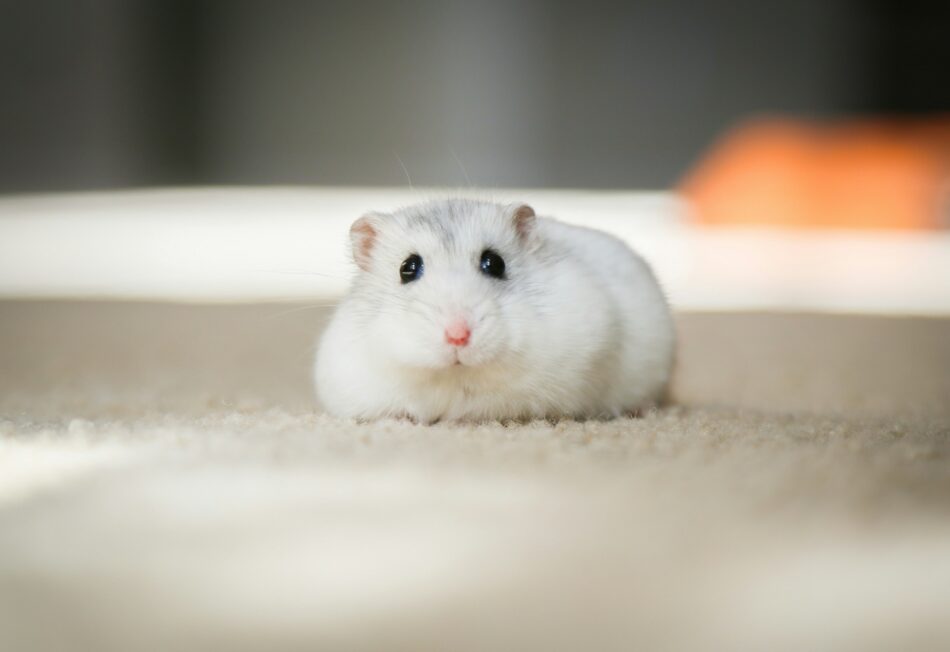The history of the hamster
The history of the hamster might not go back as far as other pets, but it’s one of interesting origin. Hamsters made the transition to domesticated pets in the 1940s, and their popularity has exploded since. Find out how these beloved rodents became one of the most popular pets around the world.

Hamsters in history
Long before hamsters could be found in homes across the globe, they were running wild across Europe, Asia, and the Middle East. In fact, you can still find varieties of hamsters in the wild in these areas – 26 species to be exact. These wild hamsters include the beloved Syrian hamster, which is among the most popular breeds of hamsters kept as pets.
First sightings
The first mention of hamsters was in 1797 when a physician named Alexander Russell discovered them in the wild, though it would be another several decades before they were named. George Robert Waterhouse, curator of the London Zoological Society, officially named this species the golden hamster approximately 40 years after their initial discovery.
Waterhouse described the golden hamster as animals with silk-like, glossy fur, white feet and tails, and body colors of yellow and gray. Today, these hamsters can be found in a wide variety of colors and patterns, which is why this breed of hamster is now more commonly referred to as the Syrian, or Teddy Bear hamster.
The first domesticated hamsters
In 1930, a zoologist named Israel Aharoni led an expedition to look for golden hamsters in Aleppo, Syria. His team dug up a wheat field and discovered a female golden hamster and her 11 pups. Aharoni transferred the hamsters to Jerusalem’s Hebrew University, where they reproduced. The offspring were sent to various universities and institutions across Europe, and by the mid 1940s households had become keeping them as pets. By 1971, another litter was found in Aleppo and sent to the United States. Shortly after, hamsters began making their appearance in American homes as beloved pets.
Other hamster varieties
Over the next few decades, other hamster varieties would make their appearance in pet shops and people’s homes. Around the same time that Syrian hamsters were becoming an animal of interest, so were Roborovski, Chinese, and Winter White, and Campbell’s dwarf hamsters.
Campbell’s dwarf hamsters
Charles William Campbell first discovered this species of hamster in Mongolia on July 1st, 1902. These small animals were bred in labs in the 1960s, and made their way into homes as pets in the 1980s. Today, they can still be found in the wild across central Europe.
Roborovski hamsters
These small hamsters were first discovered in 1894 by a Russian explorer, Lieutenant Vsevolod Roborovski. These hamsters have a natural habitat in Mongolia and portions of China, along with their remote surrounding areas. Roborovski hamsters, also known as “robos”, were first studied in 1903, and imported in the 1970s. Their status as household pets wouldn’t be established until 1990s.
Chinese hamsters
Native to China, these hamsters were first described as a new species in 1839, but wouldn’t make its domesticated debut until 1919. Chinese hamsters have a more mouse or rat-like appearance, making them less popular as pets. They could be seen in pet shops around the same time as Russian Winter White hamsters, around the 1960s-1970s.
Winter White hamsters
Also known as “Russian dwarf hamsters”, Winter White hamsters originated in Siberia, Mongolia, Kazakhstan, and Manchuria, but also in semi-arid regions of Central Asia. They were first captured in the late 1960s, and became domesticated pets by the late 1970s.
Hamsters today
Hamsters originally appealed to humans because of their genetic similarities. It was hoped that they could be studied similarly to mice and rats in order to make scientific breakthroughs. While this still holds true, their endearing size, looks, and behaviors set the perfect stage for them to become beloved pets.
Rats and mice have noticeably long tails and noses, which some people would argue are unbecoming physical traits. Because hamsters have smaller snouts and a short, stubby tail, it diminishes their rodent-like appearance. While they are still members of the rodent family, their appearance is much less unsettling to most people than those of their long-tailed cousins.
Hamsters aren’t difficult to care for, can be tamed relatively easily, and a hamster habitat doesn’t require much space in your home, making them ideal first pets. Their popularity as pets for children especially is largely due to their size and care requirements, but also because of their affinity for accessories. Hamsters can be observed running through tubes, spinning their wheels, or completing other feats of athleticism. Exercise wheels, mazes, or hamster playpens are all fun elements that hamsters and their owners can enjoy together.
Omlet and your hamster
Opening your home to a hamster gives you a piece of living history. From their humble beginnings, hamsters have captured the hearts and attention of millions all over the world. And with the right hamster habitat, you can enjoy caring for your pet in an environment that enables you to experience their world with them. Hamster playpens, tunnels, or ramps and platforms can elevate your hamster’s world, and give you more opportunities to bond with these tiny but mighty pets.
This entry was posted in Hamsters

